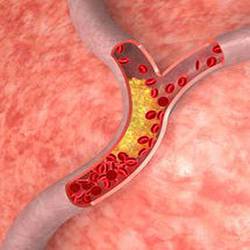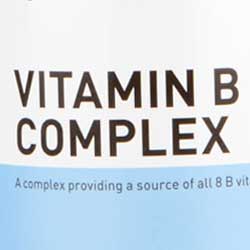Zinc and Potassium
| Cellular Nutrition
Zinc (Zn) and Potassium (K) are associated trace element / mineral pairs considered essential to human health. Potassium and zinc values represent - and at the same time affect - many aspects of the genitourinary system, whereby normalizing their levels will normalize many common medical problems associated with the urinary and reproductive system.
Zinc is a component of more than 100 enzymes associated with various metabolic processes, including the synthesis of the nucleic acids RNA and DNA. It is required for the transport of Vitamin A from the liver, and as part of superoxide dismutase (SOD) helps protect cells from free radicals. Zinc is also required for normal growth and development, reproductive development and function, and to support the immune system, where it has been shown to increase T-lymphocytes and enhance other white blood cell functions. However because of its effect on increasing white blood cell counts, a higher intake of zinc (unless low) is contraindicated with some forms of leukemia.
The body contains about 1.5 to 2.5 g of zinc, of which the kidneys, pancreas, liver, eyes, prostate and bone contain larger concentrations, however they do not function as zinc reserves, so the body depends on enough dietary intake to meet its daily requirements. Zinc is lost in sweat and through food processing.
In addition, with zinc being water-soluble, canning or cooking in water can deplete the amounts of zinc in food, and less zinc is also absorbed when it is bound with phytates or oxalates found in grains and vegetables, and when high amounts of other trace minerals such as copper, iron, calcium, and some toxic metals (cadmium, lead) are present at the same time.
Zinc deficiency has been implicated as a factor with birth defects and low birth weight, impaired learning, as well as delayed sexual development. Additional zinc intake may help with the loss of taste sensation or smell, wound healing, anorexia / loss of appetite, paranoia, depression, strong body odor, certain hair, nail, and joint / arthritic problems, benign prostatic hypertrophy, impotence, cataracts and optic neuritis, as well as skin conditions such as acne and dermatitis. It should be noted though that those infamous "White Spots" on someone's nails are not caused by zinc deficiency, as they are just as common in people with excessively high zinc levels.
Zinc is necessary to maintain normal serum Testosterone levels,[1] whereby inadequate zinc levels prevent the pituitary gland from releasing luteinizing and follicle stimulating hormones, which stimulate testosterone production. Zinc also inhibits the aromatase enzyme that converts testosterone into excess estrogen. The testosterone to estrogen ratio in men declines with aging from a high of about 50:1 to half of that, or even a low of 10:1, resulting in higher estradiol (estrogen) activity, which subsequently increases the risk of heart disease, prostate cancer, Weight Gain, or even obesity.
One reason is that fat cells contain aromatase, so more fat cells translate into more testosterone being converted to estrogen. This is further aggravated by alcohol consumption, which lowers zinc and increases estrogen, and so magnifies the problem.
Some animal studies have demonstrated a relationship between zinc and insulin metabolism, and that a deficiency may play a role in the onset of diabetes, however a relationship of zinc-deficient diets and glucose intolerance in humans is not confirmed.
Excessive zinc intake will eventually affect the balance and propaer ratios with numerous other nutrients, which includes iron, calcium, selenium, nickel, phosphorus, copper, as well as Vitamin A, B1, C, and others. It may also cause, or contribute to gastrointestinal problems, vomiting, anemia, loss of libido, impotence, prostatitis, ovarian cysts, menstrual problems, renal tubular necrosis / interstitial nephritis, dizziness, hair loss, depressed immune functions, muscle spasms, and sciatica (discussed below), among others.
While some trials showed Zinc Lozenges to be able to provide relief with sore throats, other studies showed only marginal results with cold-related symptoms, and none in regard to flu symptoms. The same mixed results can be expected when using zinc for the relief of symptoms from herpes, AIDS, or other infections. Whenever larger amounts of any nutrients (including zinc) are used for the symptomatic relief of medical symptoms, they become drugs, and as such become capable of triggering drug-like side effects or adverse reactions. Both, excessive and deficient zinc levels are associated with several types of cancer.
Potassium is one of the electrolytes that with sodium is involved in the maintenance of normal water balance, osmotic equilibrium, acid-base balance, and it is crucial to cardiovascular and nerve functions. It is also the primary positive cation found within the cells, and along with calcium serves an important role in heart muscle contractions, skeletal muscle contraction, nerve impulse transmissions, and the release of energy from food. Potassium is involved as a co-factor in several enzyme systems which include protein synthesis, carbohydrate metabolism, and it affects uptake of amino acids into cells.
In addition to calcium and magnesium, potassium helps maintain normal Blood Pressure, and next to iron, potassium is one of the most commonly prescribed minerals, since some potassium is often lost when certain diuretics [2] (water pills) are prescribed. For the same reason, serum potassium is commonly measured as part of routine lab tests, although Lab Errors (pseudohyperkalemia - false elevated serum potassium levels), are frequently encountered when several dozen variables such as improper fist-clenching / collection technique, transport, centrifuge's spinning or g-force, hemolysis, etc, affect the accuracy of potassium measurements.
As a result, many patients' potassium levels appear normal when they actually suffer from hypokalemia (low serum potassium), while others are erroneously treated for hyperkalemia (high serum potassium), when their potassium is perfectly normal. Red Blood Cell Potassium, or Intracellular Potassium (Acu-Cell Analysis) are more accurate indicators of a patient's true potassium status.
Serum potassium is well regulated in healthy individuals and not much affected by a high dietary potassium intake, so toxicity is not an issue as the kidneys readily excrete excessive potassium. But renal failure, heart or liver disease, Addison's disease, major burns or muscle trauma, gastrointestinal bleeding, some drugs, or metabolic acidosis (for which baking soda is helpful), could lead to Hyperkalemia (elevated blood potassium). However even in healthy individuals, supplementing too much potassium may affect the balance of other electrolytes such as magnesium, sodium, chloride..., or it may cause irregular heartbeat, vomiting, or diarrhea.
Potassium deficiency (low serum potassium = hypokalemia) may be associated with high blood pressure, congestive heart failure, cardiac arrhythmias, palpitations, Muscle Spasms, muscle weakness, hyperthyroid, mental apathy, blood sugar disorders, depression, erectile dysfunctions (impotence), fatigue, and general weakness, while severe potassium loss can cause death. Temporary loss of potassium can result from profuse sweating (heavy exercise, viral infections), or diarrhea and vomiting, which can also be a concern in infants.
While the average diet usually provides adequate amounts of potassium for the average, healthy individual, hormonal or organic disorders, prescribed or recreational drugs taken - including nutritional supplements such as licorice, malabsorption, one-side diets, a high sugar intake, or working in a hot, humid environment (sweating), may be some of the reasons requiring extra intake of potassium.
How to take Potassium Supplements
Potassium supplements in health food stores are generally sold as gluconate or citrate, and they are limited to 50 mg, 99 mg, or 167 mg / tablet, while in addition to acetate, bicarbonate or bitartrate, the most common forms dispensed in pharmacies are potassium chloride and potassium citrate.
Potassium is measured in milliequivalents (mEq), whereby 1 mEq equals 75 mg of potassium chloride, and 102 mg of potassium citrate. The amount of elemental potassium contained in a supplement is calculated by multiplying the mEq by 39, its atomic weight. So an 8 mEq / 600 mg Potassium Chloride tablet provides 312 mg of elemental potassium, while a 25 mEq / 2,552 mg Potassium Citrate tablet provides 975 mg of elemental potassium.
When high-potency potassium chloride supplements are taken, they come in a slow-release form ("Slow K" tablets or "MICRO-K" capsules), since the high amounts of chloride present could otherwise trigger gastrointestinal distress or bleeding ulcers. For the same reason, the tablets should be swallowed whole, and not chewed or cut in half. Those at a higher risk of developing osteoporosis, but requiring larger daily doses of potassium, are generally advised of taking "K-Lyte," available at pharmacies, which is an effervescent - and orange-flavored form of Potassium Citrate.
In contrast to potassium chloride, potassium citrate has a more favorable effect on Bone Mineral Density, Polycystic Kidney Disease, Kidney Stones, or metabolic Acidosis. The alkalizing effect of potassium citrate or bicarbonate may also be more favorable in the prevention or treatment of some Cancers.
| Potassium Acetate: | 1g provides 398mg of K - or 2,513mg = 1g of elemental K |
| Potassium Bicarbonate: | 1g provides 390mg of K - or 2,564mg = 1g of elemental K |
| Potassium Chloride: | 1g provides 520mg of K - or 1,923mg = 1g of elemental K |
| Potassium Citrate: | 1g provides 382mg of K - or 2,618mg = 1g of elemental K |
| Potassium Gluconate: | 1g provides 156mg of K - or 6,410mg = 1g of elemental K |
Potassium Chloride (Slow K) at pharmacies is the cheapest form available at about 35-50¢ per 1000 mg of elemental potassium, Potassium Citrate (K-Lyte) at pharmacies is about 90-110¢ per 1000 mg, and at health food stores (99 mg tabs) it is about 40-60¢ per 1000 mg, depending on the area, and source purchased from.
To meet minor potassium requirements, potassium chloride is also available in grocery stores as a Table Salt Substitute to season one's food, which is a cheap option (if it benefits someone's particular chemistry) at less than 5¢ per 1,000 mg of elemental potassium.
Slow K tablets, or MICRO-K Extencaps, are convenient potassium supplements to take. They require no preparation, and unlike larger citrate or bicarbonate doses, they don't subject the body to a sudden potassium spike that could trigger overdose-like symptoms such as palpitations / irregular heartbeat, muscle weakness, a drop in blood pressure, or watery stools (actual overdose symptoms are listed at the bottom of this page), although these symptoms would rarely be experienced by patients who are truly potassium deficient - i.e. they exhibit very low cellular levels of potassium - but more so when relied on the limited accuracy of serum potassium measurements.
Nevertheless, it is recommended that non 'slow-release' forms of potassium are consumed slowly over the course of a meal, or spread over several hours if an entire daily amount is dissolved in a single glass of a beverage. If in addition to low potassium an individual also suffers from low (cellular) sodium, a small amount of sodium bicarbonate (baking soda), or some table salt - if tolerated - may be added to the drink.

When bought in bulk (mail order, wine making shops, garden centers), food-grade Potassium Bicarbonate and Potassium Citrate are by far the most cost-efficient way to meet major supplemental potassium requirements at between 4¢ - 10¢ (depending on shipping charges) per 1,000 mg of elemental potassium, provided the alkalizing and calcium-sparing effect of potassium bicarbonate or potassium citrate matches one's requirements, and one is able to measure the correct amount in milligrams needed per day.
One half of a teaspoon (2½ g) of potassium bicarbonate or citrate powder provides about 1,000 mg of elemental potassium, but if unfamiliar with metric measurements, it may be best to have someone with a milligram scale (pharmacist) measure the exact amount, and then use that for reference in the preparation of the daily dose needed [ 1 g (gram) = 1,000 mg (milligram) = 0.0353 ounces ].
If tolerated, bulk sources of potassium bicarbonate or citrate are the purest forms of potassium that contain none of the additives and fillers found in tablets, such as artificial flavors, dyes, mineral oil, saccharin, talc, dextrose, and others. Lemon juice will improve the taste of a potassium bicarbonate drink, and depending on the amount added, will lower the drink's pH enough to reduce the stomach acid buffering effect commonly experienced. Because of the potential to cause bloating or diarrhea, potassium bicarbonate is usually best suited for those suffering from chronic constipation, while potassium citrate is not known to cause problems. Powdered forms of potassium are also the preferred choice for individuals who have problems swallowing pills.
Similarly to Zinc, there is no storage of Potassium in the body, and it is easily lost in cooking, canning, and processing of foods. Some is lost through perspiration, and the adrenal hormone aldosterone also stimulates the elimination of potassium by the kidneys. Individuals with a family history of stroke may want to make sure that they always meet, or even exceed optimal potassium requirements through diet or supplementation, particularly when consuming meals containing above-average amounts of sodium - which should be avoided whenever possible.
All fruits, vegetables, grains and nuts are a good source of potassium, however the potassium / sodium ratio of these foods varies considerably, which can be used to one's advantage - not only for those who require more potassium, but also for people who lack sodium and retain too much potassium.
Sources with the highest potassium / sodium (K/Na) ratio include beans, peas, potatoes, grains, nuts and fruits - where for instance pistachios contain about 1000x more potassium than sodium, bananas nearly 400x more potassium than sodium, and potatoes about 80x more potassium than sodium. In contrast, spinach, celery, or beets contain only about 3x to 7x more potassium than sodium, with the same ratio applying to whole milk, chicken and lamb, while eggs, beef and fish contain between 6x to 10x more potassium than sodium. On the other hand, Kelp contains 2.6x more sodium than potassium.
In contrast to serum potassium, intracellular potassium levels are more diet-dependent and increase on a linear scale according to dietary intake, specific medical conditions, and the levels of interactive minerals such as sodium, magnesium, lithium, calcium, phosphorus, sulfur, chromium and others. Serum and cellular potassium levels coincide only when both are at a low to normal range, and then only when blood potassium was obtained following all the rules and precautions that assure more accurate measurements. If too much potassium is ingested or retained, intracellular measurements readily pick up those higher levels in otherwise healthy individuals, where there would be no changes in serum potassium. These changes can be used for diagnostic, therapeutic, or preventive purposes.
In addition to medical situations that can lead to hyperkalemia (high serum potassium), cellular potassium covers aspects of bladder functions, as well as right-sided ovarian and testicular properties, while cellular zinc levels cover aspects of prostate / uterine functions, and left-sided ovarian and testicular properties. Elevated potassium is invariably found with acute or chronic Cystitis (bladder infections) or right-sided Ovarian cysts (but not dermoid or chocolate cysts), whereby right-sided ovarian and/or testicular Cancer will always result in excessively high cellular potassium levels, which can also serve as a high risk indicator to be suggestive of a pelvic scan.
Lowering potassium with any of a number of nutritional antagonists will resolve many bladder infections, or (right-sided) ovarian cysts without any other intervention. In contrast, left-sided ovarian and/or testicular cancer is always associated with excessively high cellular zinc levels.
Low potassium - particularly in the elderly - frequently results in weak bladder muscles and potential incontinence when coughing or laughing. Under those circumstances, bladder infection-like symptoms can also be experienced (including cloudy, or smelly urine), however they are somewhat different from a conventional bacterial cystitis that goes hand in hand with high potassium levels, in that symptoms improve by raising potassium to normal levels, provided there are no structural causes such as bladder prolapse. Interstitial Cystitis frequently falls into this same low-potassium category.
Although some individuals are able to maintain normal, or even higher zinc and potassium levels well into old age, on average, both minerals tend to undergo a steady decline through middle age and beyond, coinciding with a menopause and andropause-related decline of hormone levels in a majority of the population. This in turn sets the stage for developing any number of medical disorders typically associated with, but not exclusive to that age range, including high blood sugar and blood pressure-related issues, hormonal / metabolic health and weight problems, where even those who never had a weight problem before are finding it difficult now to maintain their weight.
For some, a higher dietary or supplemental intake of zinc and potassium will sufficiently support their testosterone and androgen status, while others may be offered hormonal support by their practitioners, which works in part by reducing zinc and/or potassium loss. Both, the primary hormone precursor pregnenolone, as well as the secondary hormone precursor DHEA will help maintain better zinc and potassium levels, however only an individual assessment, and tolerance, will best determine which treatment approach to follow.
Prostatitis is invariably found with cellular zinc levels that range from above-normal, to excessively high. Many alternative practitioners include zinc as part of their therapy trying to treat prostatitis, however only Benign Prostatic Hypertrophy (BPH), or an enlarged prostate, is sometimes related to below-normal levels of zinc. At higher levels, zinc becomes pro-inflammatory, being a main reason why those who supplement extra zinc for prostatitis generally worsen their symptoms. Instead, any approach that lowers zinc will more likely resolve the condition. (see "Prostatitis" for details).
Some menopausal females find Progesterone Cream helpful for Night Sweats, however it may not always be the hormonal action of progesterone, but its subsequent zinc and potassium-raising effect through which the night sweats are improved - particularly when high sodium retention is involved. Taking potassium and/or zinc supplements instead may provide the same benefits.
Likewise, many weight loss formulations contain rather large amounts of potassium to take advantage of its diuretic properties. While some people benefit from additional potassium and will lose water weight, those with a tendency for hypoglycemic (low blood sugar) episodes may end up worse as a result of that extra potassium reducing manganese and chromium levels, which help stabilize blood sugar, and partly as a result of potassium reducing sodium, which slows insulin response. In addition, lowering chromium too much as a result of long-term high potassium intake can contribute to osteoporosis of trabecular bone (spine or end-part of a bone).
Total Cholesterol (not LDL or HDL) levels are somewhat affected by potassium levels, whereby low cholesterol is often found in the presence of low potassium, while Total Triglycerides are somewhat affected by zinc levels, whereby low triglycerides are frequently found in the presence of low zinc. Some exceptions apply, particularly when high calcium and/or magnesium levels are involved, which have a lowering effect on total triglycerides (calcium) and total cholesterol levels (magnesium) also.
Sciatica: Most sciatic conditions that are not related to a herniated disk can be linked to an abnormal zinc / potassium ratio, or less commonly to an abnormal selenium / sulfur ratio. More than 25 years ago, Dr. Ronald Roth used to treat sciatica with either ear or body Acupuncture, and in severe cases implanted tiny needles in patients' ears for ongoing, or permanent pain control.

Similar techniques have been used by other practitioners around the world for a variety of medical conditions, with for instance Dr. Ulrich Werth reporting a 96.5% improvement with the symptoms of Parkinson's disease after permanently implanting titanium needles at strategic points in patients' ears.
In the treatment of sciatica though, Dr. Ronald Roth noticed that the implanted needles had the unique effect of changing cellular zinc or potassium levels in those patients, so Dr. Ronald Roth subsequently used the same side-specific mineral instead of applying acupuncture, with their sciatica improving the same, without any other therapy, and at times even faster than previously accomplished with acupuncture. This would certainly challenge the common assumption that the release of endorphins is the only mechanism by which acupuncture is able to provide pain relief.
If too much of the mineral was supplemented, the sciatica would initially improve, but then eventually shift over to the other side - creating the opposite mineral ratio of before (instead of a low zinc / high potassium ratio, it would now be a low potassium / high zinc ratio). Using the paired (associated) mineral, the sciatica would shift back to a no-pain state, or if overdosed, back to the original side, so achieving permanent results depends on supplementing the right amount of the side-specific mineral or trace element.
Even if chiropractic adjustments are used to treat sciatica, the number of treatments can be substantially reduced by normalizing the corresponding mineral ratio, and they will last longer, if not permanently (see also "Mineral Ratios" for the relationship of associated (trace) mineral pairs to spinal alignment).
The same approach can be used with many one-sided Headaches / Migraines as well, where they can be made to shift back and forth between the two sides, using either associated mineral pairs, or specific vitamin combinations, although double-sided headaches won't respond to this therapy, since there are no means of shifting the pain to the other side (see "Headaches" for details).
Some less common forms of Multiple Sclerosis present with very low cellular zinc and/or potassium levels, and although the diagnosis is confirmed through MS-specific symptoms and MRI-verified demyelination and lesions, symptoms readily improve when normalizing the patient's zinc and potassium status.
That same association to diminished motor nerve activity can also be seen in some children or teens, who tend to do very poorly in any type of Sports and Gymnastics, and whose athletic performance steadily improves after raising their previously very low zinc, and very low potassium levels.

 Manganese may help with some symptoms of Parkinson's disease such as muscle rigidity and twitching...
Manganese may help with some symptoms of Parkinson's disease such as muscle rigidity and twitching...
 Research shows that phytosterols such as beta-sitosterol may help normalize the function of natural killer cells and T-helper lymphocytes...
Research shows that phytosterols such as beta-sitosterol may help normalize the function of natural killer cells and T-helper lymphocytes...
 Iron deficiency may be suspect with some forms of ADHD. 84% of children with ADHD were found to have abnormally low levels of ferritin...
Iron deficiency may be suspect with some forms of ADHD. 84% of children with ADHD were found to have abnormally low levels of ferritin...
 A high intake of B Vitamins can trigger heart palpitations, HBP, major complications in patients with congestive heart disease...
A high intake of B Vitamins can trigger heart palpitations, HBP, major complications in patients with congestive heart disease...